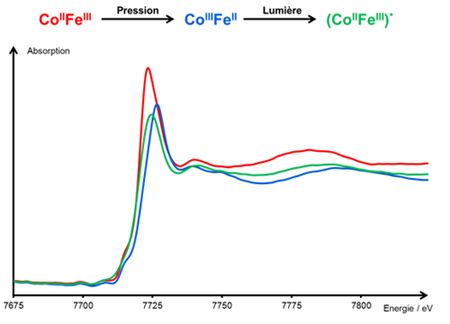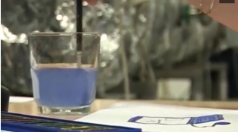Using light to control the electronic state at the molecular level is a challenge for the development of new technologies for high density data storage. To develop new molecular memories, a group from Paris Sud University is working with the ODE, SMIS and PSICHE beamlines at SOLEIL.
The optical reading and writing of data bits at the molecular level is an alternative way of storing information. These optical molecular memories designed by chemists are tiny (a few atoms), robust and quick ... but currently they only operate at very low temperatures (rarely above -150°C)! In order to be able to use these systems in large-scale applications, one major challenge is to raise the "operating temperature" up to room temperature.
Cobalt-iron Prussian blue analogs are compounds that can show these optical transition properties at low temperatures, by means of electron transfer between the cobalt and iron cations.
By linking a physical constraint, putting the compounds under pressure, with the chemical modulation of their operating temperature, the first optically activated electron transfer out of a thermal hysteresis loop at room temperature could be shown (Figure 1), thus opening new possibilities for the production of molecular memories.

Figure 1 : X-ray absorption spectra at cobalt K-edge carried out on the ODE beamline. The spectra correspond to the same sample in the initial CoIIFeIII (─) state, in the CoIIIFeII (─) state, obtained under pressure and in the (CoIIFeIII)* (─) state obtained from the CoIIIFeII state by irradiation at room temperature.
A combination of SOLEIL synchrotron resources provided the means to characterize the optical transitions within the Prussian blue cobalt-iron analogs: the ODE, PSICHE and SMIS beamlines offered different but complementary structural and electronic probes. Using a series of experiments common to these beamlines, it was possible to study the various structural and electronic states involved in the photoswitching process of the Prussian blue cobalt-iron analogs. This coordinated study was made possible thanks to the richness of the environments available on these lines, allowing both temperature and pressure of the samples to be controlled during the measurements, as well as their laser irradiation.

